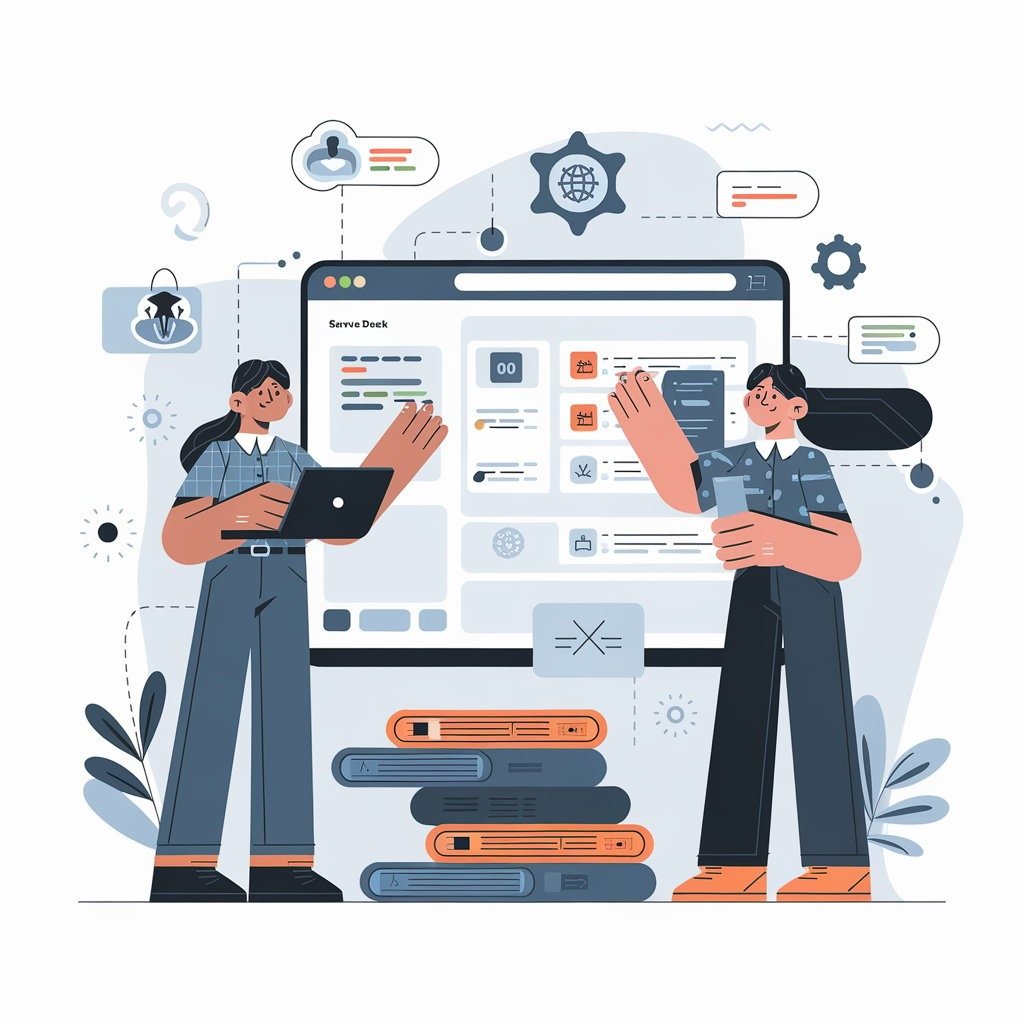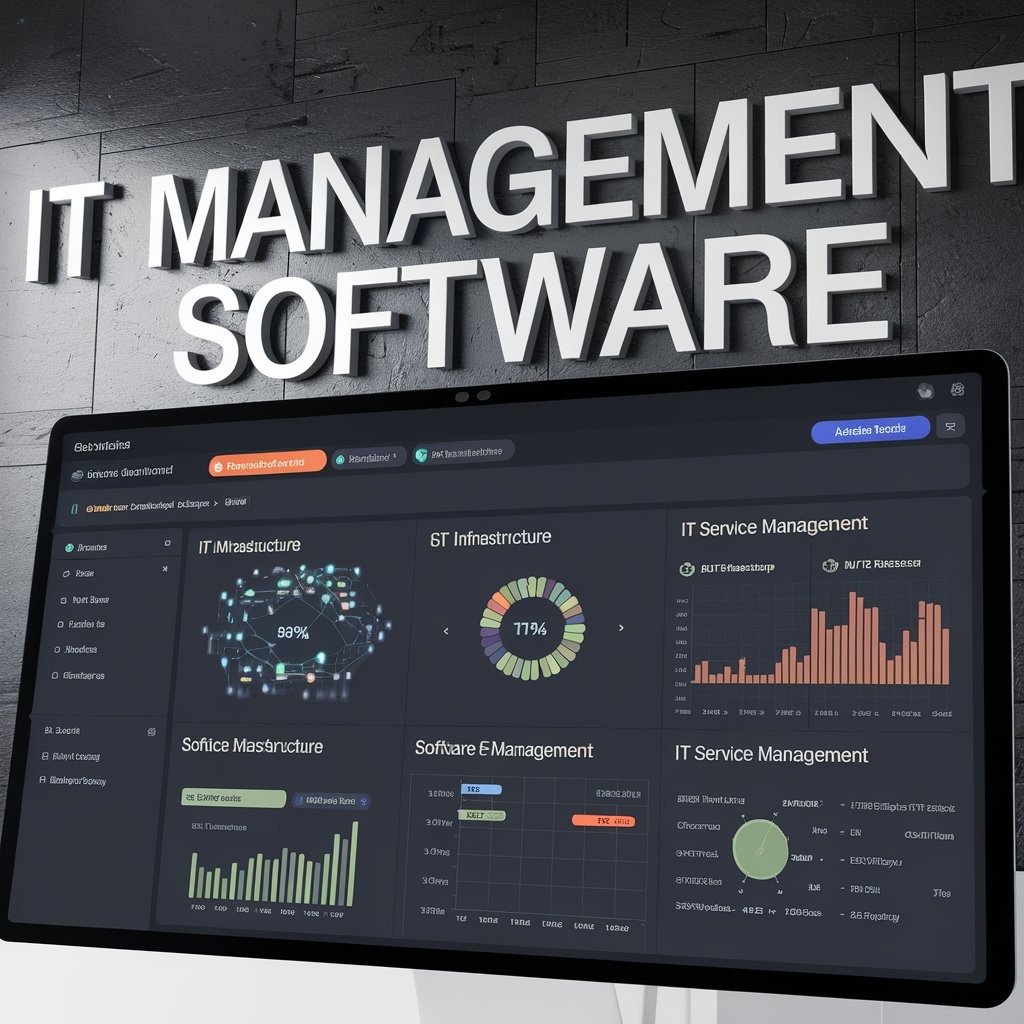Executive Overview
This guide offers a comprehensive look at IT service management (ITSM) software and IT management solutions that drive enterprise IT operations.
It covers unified service management platforms, IT service desk software, and essential IT management tools—from incident, change, and asset management to help desk management and ticketing systems. You’ll discover top IT service management tools for incident and change management, along with cloud-based ITSM solutions featuring AI, low-code automation, and virtual support agents.

Whether you need network performance monitors or IT support software for digital transformation, this guide provides clear insights and actionable recommendations for IT decision-makers seeking efficient, scalable, and innovative IT operations.
Introduction to ITSM
IT Service Management (ITSM) is a modern approach to managing IT services that goes beyond traditional IT management software. As enterprises embrace digital transformation, unified service management platforms have become essential tools for effective IT operations. ITSM solutions—ranging from IT service desk software to help desk management systems—enable organizations to streamline incident management, change processes, and asset tracking.
These IT management tools, including top IT service management software for incident and change management, not only support day-to-day IT functions but also drive innovation with AI-powered automation and low-code customization
Designed for IT decision-makers and support teams alike, these solutions help improve network performance and ensure scalable IT support for enterprises.
Detailed Feature Analysis
IT service management software is essential. In our feature analysis, we explore core functionalities such as incident management, change management, and IT asset management. These IT service desk solutions offer ticketing systems, self‑service portals, and knowledge bases, enabling swift issue resolution.
The best IT service management software for incident and change management features service catalog integration, workflow customization, and automation capabilities.
Whether you need a unified IT service desk solution with predictive intelligence and virtual support agents or a cloud‑based ITSM solution with AI and low‑code automation, these tools drive digital transformation and provide overall scalable IT support for enterprises.
Advanced Functionalities and Technological Innovations
Modern ITSM tools are evolving with powerful AI and machine learning integration. These platforms now offer automation and predictive analytics that simplify complex workflows. For instance, virtual support agents and zero‑touch service capabilities help streamline incident and change management processes. Advanced functionalities include low‑code customization, enabling teams to tailor workflows and improve IT asset management. With AI-driven IT service desk solutions, organizations benefit from automated ticket routing, smart approvals, and enhanced reporting. This next-generation ITSM solution, a cloud‑based tool with AI and low‑code automation, drives digital transformation while ensuring scalable, efficient, and responsive IT support for enterprises

Integration and Ecosystem Connectivity
Seamless integration is a core benefit of modern IT management software. Today’s IT service management (ITSM) tools are designed as unified service management platforms that connect effortlessly with ERP, CRM, and collaboration tools.
This cross‑platform integration enables smooth data migration via APIs, ensuring that your IT support software works harmoniously with existing systems. Whether you choose a cloud‑based ITSM solution with AI and low‑code automation or a scalable on‑premises deployment, integrating IT asset management, incident management, and change management modules is key.
These solutions support multi‑departmental collaboration, driving digital transformation and improving overall IT operations management in a rapidly evolving business landscape.
Security, Compliance, and Governance
Ensuring robust security, regulatory compliance, and effective governance is vital in today’s IT service management environment. Modern IT management software integrates advanced cybersecurity and threat intelligence to safeguard sensitive data.
These unified service management platforms enforce strict data privacy, access control, and audit trails, ensuring compliance with standards such as GDPR, HIPAA, and ISO. By adopting IT service management software for incident and change management, organizations can minimize risks while streamlining operations.
Comprehensive security measures combined with solid governance provide scalable IT support and build trust across departments, making your IT service desk software a reliable foundation for digital transformation.
Best Practices for Implementation and Change Management
Implementing IT service management software successfully starts with a thorough pre‑implementation assessment and strategic planning.
For a unified IT service desk solution incorporating robust incident management, change management, and IT asset management, organizations must invest in comprehensive training and effective change management strategies. Creating detailed roadmaps, establishing clear communication channels, and incorporating continuous feedback are best practices to ensure smooth adoption.

Leveraging cloud‑based ITSM solutions with AI, predictive intelligence, and low‑code automation minimizes disruptions and accelerates digital transformation. These practices enhance IT operations, improve ROI on IT support software, and create a scalable system that supports enterprise growth and innovation.
Measuring Business Impact: ROI and TCO
Measuring business impact with IT service management software is crucial. Organizations need to calculate ROI and conduct total cost of ownership (TCO) analysis to justify investments. By tracking key metrics such as incident resolution time, change management efficiency, and asset utilization,
ITSM tools provide clear insights into cost savings and performance improvements. Detailed reporting and analytics help quantify benefits from unified service management platforms and IT service desk software. Furthermore, using predictive intelligence and AI-driven automation boosts efficiency and reduces downtime.
A ROI and TCO evaluation ensures that your digital transformation strategy delivers scalable IT support and long-term business value.
Future-Proofing Your ITSM Investment
Future-proofing your ITSM investment means adopting IT management software that evolves with emerging technologies. Modern IT service management (ITSM) platforms integrate AI, IoT, and even blockchain to deliver next-generation incident management, change management, and IT asset management.
A unified service management platform with predictive intelligence and virtual support agents ensures your IT service desk software remains agile amid digital transformation. Embrace cloud‑based ITSM solutions with low‑code automation and sustainable practices that reduce energy usage and support green IT initiatives. By staying ahead of trends in digital transformation and automation, you secure scalable IT support and lasting value for your enterprise
Missing Headings – Overlooked Yet Vital Considerations
Beyond core IT service management features like incident, change, and asset management, there are often overlooked factors that can significantly impact your investment. Look for vendors offering exceptional post‑sale support, training, and active community engagement, ensuring you get continuous value from your IT management software.
Additionally, consider scalability beyond IT—solutions that extend support to HR, facilities, legal, and other departments through a unified service management platform. In today’s hybrid and remote work environment, innovations in user experience and intuitive interface design are essential.
A truly comprehensive ITSM solution should not only streamline ticketing systems and help desk management but also adapt to your organization’s evolving digital transformation needs.
Comprehensive Vendor Comparison
Selecting the right IT service management software is crucial for digital transformation. Our comprehensive vendor comparison examines leading ITSM tools based on core features such as incident management, change management, and IT asset management.

We evaluate unified service desk solutions that offer efficient help desk management, robust ticketing systems, and user-friendly self‑service portals. Additionally, we compare cloud‑based ITSM solutions with AI‑driven automation, predictive intelligence, and low‑code customization to ensure scalable IT support. Our analysis also covers pricing models, licensing options, and deployment flexibility.
This guide reviews the best IT service management software for incident and change management, helping you choose top ITSM tools that drive enterprise efficiency and innovation effectively
Frequently Asked Questions (FAQs)
Q1: What differentiates ITSM from traditional IT management?
ITSM extends traditional IT management by incorporating incident, change, and asset management alongside unified service desk functionality and self‑service portals. This approach uses IT service management software with AI-driven automation and predictive intelligence for scalable IT support.
Q2: How do AI and automation enhance IT service delivery?
Modern ITSM tools integrate AI and low‑code automation to streamline ticketing, automate workflows, and deploy virtual support agents, ultimately reducing downtime and improving efficiency.
Q3: What factors should be considered when calculating ROI and TCO?
Detailed reporting, cost‑benefit analysis, and robust analytics from cloud‑based ITSM solutions help assess the overall value, ensuring that your digital transformation strategy delivers measurable benefits.
13. Conclusion and Actionable Next Steps
In summary, effective IT service management software—whether a cloud‑based ITSM solution or a unified service desk platform—drives digital transformation by streamlining incident management, change management, and IT asset management.
These IT management tools, enhanced with AI-driven automation and low‑code customization, boost efficiency and provide measurable ROI and TCO benefits. As you evaluate vendors, consider factors like robust help desk management, self‑service portals, and post‑sale support. Ultimately, adopting a scalable ITSM solution that integrates seamlessly with ERP and CRM systems will future‑proof your IT operations.
Take action now by comparing key features, pricing models, and deployment options to choose the best IT service management software for your organization


